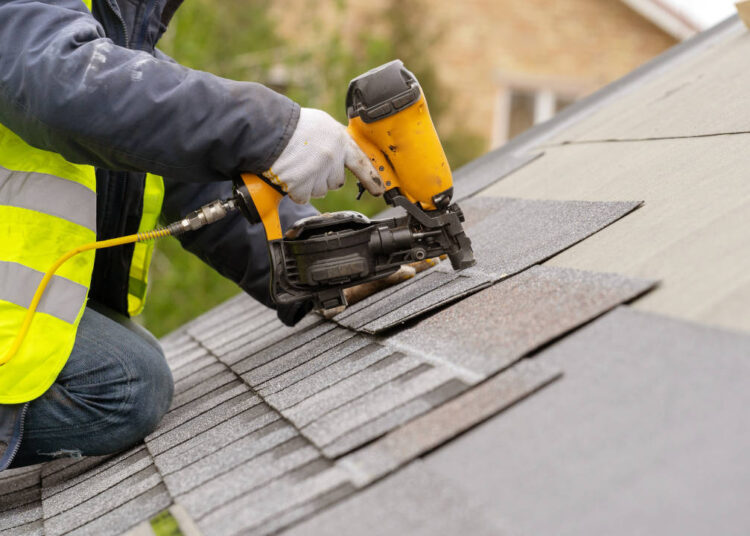Exploring the world of roofing and siding contractors in my area opens up a realm of possibilities. From selecting the right professionals to understanding materials and maintenance, this guide provides a comprehensive overview that aims to inform and educate readers.
. Understanding the different materials available can help you make an informed decision that suits your needs and budget.
Researching Roofing and Siding Contractors
When researching roofing and siding contractors in your area, it is essential to identify the top contractors who have a reputation for providing high-quality services. Selecting reputable contractors can make a significant difference in the outcome of your roofing and siding projects. It is crucial to compare the services offered by different contractors to ensure you choose the best one for your needs.Identifying Top Roofing and Siding Contractors
- Look for contractors with positive reviews and testimonials from previous clients.
- Check for certifications and licenses to ensure the contractors meet industry standards.
- Ask for recommendations from friends, family, or neighbors who have had similar work done.
Criteria for Selecting Reputable Contractors
- Experience in the roofing and siding industry.
- Insurance coverage to protect both the contractors and your property.
- Transparent pricing and detailed contracts outlining the scope of work.
Comparing Services Offered
- Check if the contractors offer a wide range of roofing and siding materials to choose from.
- Inquire about warranties and guarantees on the work completed.
- Consider the customer service and communication skills of the contractors.
Hiring the Right Contractor
When it comes to hiring a roofing and siding contractor, there are a few key steps you should take to ensure you are choosing the right professional for the job.It is crucial to verify that the contractor you are considering has the necessary license and insurance. This not only protects you as the homeowner but also ensures that the contractor meets the required standards for quality work and safety. Ask the contractor to provide proof of their license and insurance before moving forward with any project.Verifying License and Insurance
Before hiring a roofing or siding contractor, make sure to verify their license and insurance. A licensed contractor has met certain requirements and standards set by the state, ensuring they are qualified to perform the work. Additionally, insurance protects you from liability in case of accidents or damages during the project.- Check the contractor's license with the appropriate state licensing board.
- Ask for a copy of the contractor's insurance policy and verify its validity.
- Ensure that the insurance policy covers workers' compensation and liability.
Checking References
Checking references is another important step in hiring the right contractor. By speaking with past clients, you can get a better understanding of the contractor's work ethic, professionalism, and the quality of their work.- Ask the contractor for a list of references and contact them to inquire about their experience.
- Inquire about the timeliness, communication, and overall satisfaction with the contractor's work.
- Visit completed projects if possible to see the quality of work firsthand.
Written Estimates and Contracts
Having written estimates and contracts in place is essential when hiring a roofing or siding contractor. These documents Artikel the scope of work, costs, timelines, and other important details, providing clarity and protection for both parties involved.- Request a detailed written estimate from the contractor before starting the project.
- Review the contract carefully to ensure all terms, warranties, and guarantees are included.
- Negotiate any unclear or missing details before signing the contract to avoid misunderstandings later on.
Understanding Roofing and Siding Materials
When it comes to roofing and siding materials, there are several options to choose fromCommon Roofing Materials
- Asphalt Shingles: Affordable and easy to install, asphalt shingles are the most popular choice for residential roofing.
- Metal Roofing: Durable and long-lasting, metal roofing is known for its energy efficiency and resistance to harsh weather conditions.
- Wood Shingles/Shakes: Known for their natural look and charm, wood shingles/shakes can add a rustic appeal to your home.
- Clay or Concrete Tiles: These materials offer a unique aesthetic and are highly durable, making them a popular choice for Mediterranean-style homes.
Benefits of Different Siding Materials
- Vinyl Siding: Low maintenance, cost-effective, and available in a wide range of colors and styles.
- Fiber Cement Siding: Durable, fire-resistant, and can mimic the look of wood, brick, or stucco.
- Wood Siding: Natural and eco-friendly, wood siding provides a classic look and can be painted or stained to match your preferences.
- Brick Siding: Timeless and low maintenance, brick siding offers excellent insulation and can last for decades.
Choosing the Best Materials for Your Climate
When selecting roofing and siding materials, it's essential to consider your climate. For example, in regions with heavy rainfall, moisture-resistant materials like metal roofing and fiber cement siding are ideal. In areas prone to high winds or hurricanes, durable materials like metal roofing and brick siding can provide added protection. Consulting with a professional contractor can help you determine the best materials for your specific climate and location.Maintenance and Repairs
Regular maintenance and timely repairs are crucial for ensuring the longevity and performance of your roof and siding. By addressing issues promptly, you can prevent costly damage and extend the lifespan of these essential components of your home.Key Maintenance Tasks
- Inspecting the roof and siding for any signs of damage, such as missing shingles, cracks, or warping.
- Cleaning gutters and downspouts to ensure proper drainage and prevent water buildup.
- Trimming overhanging branches to prevent damage from falling debris.
- Checking for signs of mold, mildew, or rot, which can indicate underlying issues.
Identifying Common Issues
- Roof leaks: Look for water stains on ceilings, peeling paint, or damp spots in your home.
- Siding damage: Check for cracks, holes, or discoloration in the siding material.
- Moss or algae growth: These can indicate excess moisture and may lead to deterioration of the roof or siding.
- Loose or missing shingles: These can leave your roof vulnerable to leaks and water damage.
Importance of Timely Repairs
- Prevent further damage: Addressing issues promptly can prevent minor problems from escalating into major repairs.
- Extend lifespan: Regular maintenance and repairs can help extend the lifespan of your roof and siding, saving you money in the long run.
- Maintain curb appeal: Keeping your roof and siding in good condition enhances the overall appearance of your home.
- Protect your investment: Your home is a valuable asset, and proper maintenance ensures its protection and value retention.









